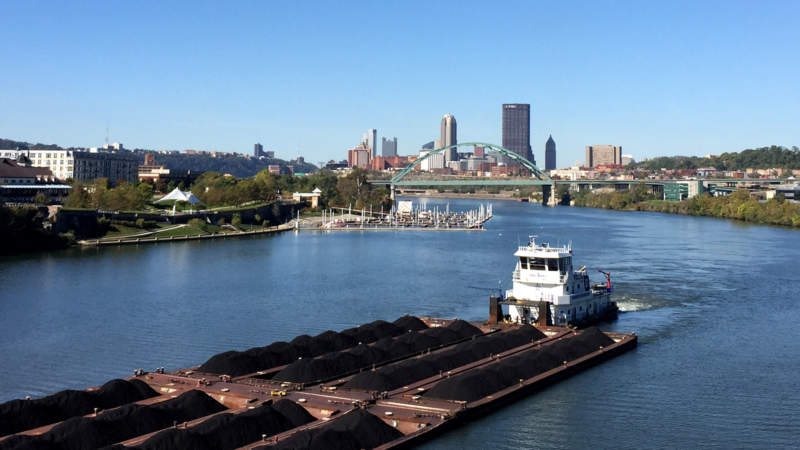The Monongahela River flows for 130 miles from mountainous West Virginia through the heart of Western Pennsylvania’s historic steel-making corridor, and into Downtown Pittsburgh, where it meets the Allegheny River at Point State Park. It runs next to the Great Allegheny Passage from McKeesport, past Duquesne, Homestead, and Pittsburgh’s South Side, and under the Riverton Bridge and Hot Metal Bridge. The workhorse of Pittsburgh’s three rivers, the Monongahela is best known for carrying barges laden with commodities like coal, petroleum, coke, iron, steel, and asphalt — nearly 17 million tons annually — to fuel American industry. Nine locks and dams make “the Mon” navigable year-round, and a new marina at Pittsburgh’s South Side attracts yachts and speedboats. It furnishes hydroelectric power to several cities in its upper reaches and is a source of drinking water for about one million people.
River History
There have been several eye-opening events along the section of the Monongahela River that parallels the Great Allegheny Passage. In 1755, General Edward Braddock, on his campaign to take Fort Duquesne, led his slow-moving troops across the river, after which they were engaged by a fleeter force of French and Native Americans. The British soldiers scattered, Braddock was killed, and Colonel George Washington coordinated a hasty retreat. The site of the “Battle of the Monongahela” is visible from the Port Perry Flyover.
By 1892, industry dominated the banks of the river near Pittsburgh, and a fiery month-long labor dispute between striking laborers and mill management answering to magnate Andrew Carnegie resulted in the “Battle of Homestead” in which laborers and townspeople engaged hired guards and non-union workers in a fight to control the locked factories. At least 10 people died, hundreds were wounded, and the state militia was called in to bring peace. Rivers of Steel Visitors Center is housed in The Bost Building, which had a crucial role in that conflict and a labyrinth adjacent to the GAP is a perfect place to pause and reflect.
In 1956, a B-52 Mitchell bomber ran out of fuel on a routine cross-country flight, and made a wheels-up landing in the Monongahela River just past the Homestead Greys Bridge. All six crew members survived the crash, but two drowned while swimming to shore. To this day, despite extensive research, dredging, sonar scanners, and remote-controlled cameras, the plane remains unrecovered and is referred to as the “Ghost Bomber.”
Visitor Center
The Monongahela River is visible from the GAP for 19 miles, although public access is limited to the South 18th Street boat ramp on Pittsburgh’s South Side, as much of the land between the GAP and the river is privately owned.

